Common Printing Techniques
For one’s understanding and knowledge about the various techniques and terminologies, we have given a brief explanation below.
a. Blind Embossing
This is a technique where the letters and images appear raised but are colourless. Blind embossing is normally used for borders, monograms and other design elements. This type of embossing is not used for the invite content and more for the special elements/embellishments.
b. Screen Printing
Screen printing is a process of printing wherein a mesh is used to transfer ink onto a substrate. The ink gets transferred to the substrate with the exception of the area blocked by the blocking stencil. A blade is then moved across the screen to fill the open mesh apertures with ink, and a reverse stroke then causes the screen to touch the substrate momentarily along a line of contact. The ink wets the substrate and is pulled out of the mesh apertures as soon as the screen springs back after the blade has passed. In this type of printing only one colour can be done at a time. For multiple colours several screens are made. This is the most common type of printing used for Standard Invitations.
c. Digital printing
Digital printing is a type of printing in which the digital based image is transferred directly to a variety of media. The printing is done using high volume Inkjet/laser jet printers. The lead time is very less but the costs are higher but is preferred for its ability to customised every single invite.
d. Embossing
Embossing is the method of pressing an image into paper or cardstock to create a three dimensional design. Embossing results in a raised surface with the design slightly higher than the surrounding areas of the paper.
e. Engraving
This is the process where the image is engraved on a metal plate, then ink is applied to the plate and wiped off gently in a manner so that the ink remains only on the engraved line. The metal plate is then pressed on the paper to produce a print. This is the process of engraving.
f. Foil stamping
A process where a steel or copper plate is used to push the metallic foiling into the paper to make an impression. The area where the foiling is made looks shining and beautiful. Usually the names of the couple and certain divine images are decorated with foiling.
g. Laser cutting
Laser cut is something where intricate designs are created using the laser technology on invitation or envelope. This is machine programmed and fully atuomated. The main drawback is that in some cases it leaves noticeable burn marks on the reverse of the paper.
h. Letterpress
This is an old printing technique, which is rarely used now. In Letterpress printing individual blocks of movable type are arranged into a caddy forming words from the combination of letters. All the characters were moulded in the reverse and the words were also arranged in reverse as these blocks were to be used for printing.
i. Offset printing
Offset printing is a commonly used printing technique in which the image that is inked is directly transferred from a plate to a rubber blanket and then finally to the printing surface. Offset printing works out cheaper only when the quantity is more, ideally more than 750 Nos and generally is the preferred mode of printing customised invitations.
j.Thermography
Thermography is the heat-based process that infuses ink and resinous powder to create raised lettering. The difference between thermography and engraving is that in Thermography, the text is slightly shiny and the back of the invitation remains smooth whereas engraving leaves an impression on the reverse of the paper.
Printing Terms and Techniques
a. Alignment
Alignment refers to the positioning of the text on the card in relation to the margins. Traditionally the text is placed on the centre of the card. However in modern invitations the text is sometimes aligned to one side.
b. Calligraphy
Calligraphy is an art of stylish writing. Traditionally the invites used to be written by calligraphers using ink and a quill or a pen with a steel nib. Writing invites with Calligraphy was considered as a pride and a seal of prestige during the pre industrial age before the advent of the modern printing technology.
c. Handwritten
This is the same as the previous point. Most of the Handwritten Invites were written by a calligrapher using calligraphic styles.
d. Point size
The point size is a unit of measurement that indicates the size of an individual letter or a character.
e.Typography
Typography is an art of arranging the typefaces, point sizes and line length into a readable language..
Types of Alignments
There are three types of alignments which are commonly used in the invitation left, right and centered. One can choose alignment layout based on his / her choice.
a. Left Aligned:
Left aligned texts begin each line along the left margin of the invitation.
b.Right Aligned:
It aligns the beginning of each line of text along the right margin of the invitation
c.Centered:
Centered text is placed in the center of each line. So when you type, the text expands equally to left and right. It leaves the same space on both sides of the margin.
Types of paper used for the wedding invites.
a.Backer
Backer is a piece of paper on the top of which an invitation is placed. The backer often matches the colour scheme of the wedding invitation. It is one of the ways of adding a design element to a simple invitation.
b. Bamboo paper
Bamboo is an eco-friendly paper which is manufactured from bamboo.The bamber being very soft and thick makes it ideal for using in the letterpress printing.
c. Corrugated
Corrugated papers are made from cellulose fibers. In the process of making the corrugated paper two sheets are gummed together and glued to the inner medium which is called fluting. The corrugated paper is characterised by thick wrinkles, grooves and ridges.
Thick wrinkles, ridges and grooves that give paper a cardboard look.
d. Cotton fiber
This type of paper is purely made from cotton fibre. This is considered by many as the most traditional option available for Invitations.
e. Deckled edge
Deckled edge paper is a paper with a feathered edge in contrast to the cut- edge.
f. Glassine
Glassine is a very thin, waxy paper with a slick, shiny surface. Glassine is almost similar to vellum. Glassine is mainly used for envelopes or liners rather than for the actual invitations. This is mainly because of its delicate nature.
g. Handmade papers
Handmade papers are manufactured from natural materials like cotton, rag, hemp and plant fibers. They generally have a rough texture.
h. Industrial papers
Industrial papers are manufactured mainly from recycled fibers.
i. Linen finish
Linen paper is made from high-quality plant fibers with a cloth-like feel. The cloth-like feel and the texture of the linen paper makes them ideal for Invitations, business cards and greeting cards.
j. Marbled paper
These are paper that are marked with swirling patterns and designs similar to the surface of a marble.
k. Matte
Matte coated paper is a paper with a non-reflective finish. They dont have a glossy finish.
l. Mylar
This is a Foil-like paper with a glossy finish. This is mainly used for envelopes as opposed to Invitations because the ink does not print properly on this paper and the effect will be like printing on plastic materials.
m. Parchment
Parchment is a translucent paper which is mainly used as a decorative element in the invitation.
n. Rice paper
Although this thin, soft paper is called Rice paper, it is not actually made from rice but from other fibres like mulberry and hemp.
o. Vellum
This is a Paper which is made from a cotton blend. Vellum has a translucent, frosted appearance and a smooth finish making it feel like a plastic. The sturdiness of Vellum makes it inevitable to be used for invitations.
Special design Treatment:
Belly band
This is a piece of material like a ribbon or a laser cut band that wraps around the invitation making it appear as a special design and at the same time as a band to hold your invitation and the inserts together.
Edge painting
Edge painting is the painting or inking the edge of a thicker card with a beveled edge.
Monogram
A monogram is a combination of your name and your bride’s name. It can be either both of your first names or your first and last initials or just your first initials. Many couples prefer to use a custom-designed monogram as a wedding motif.
Motif
An image, recurring theme or a design which is used throughout the wedding, including invitations and other wedding papers.
Perforations
Perforations are small holes that are punched on the paper. These are used to create a design or effect.
Wax seal
Wax seal is a traditional seal which has been used since medieval times for sealing documents and envelopes. These Seals are now being used in weddings where the family emblem is made into a wax seal and then used. Couples also create their own monogrammed seals for their wedding..
Should your invitation look simple? Add special features to it to make it great
Special inks:
The quality of the invitation can be enhanced by using inks that give a special effect to the invites. This gives a classy and elegant feeling to the Invitation. Colours of Metallic Shades and glitter are some of the best examples that enhance the outlook of the invitation.
If you are still not satisfied with special inks, foiling may be the next option for you. Gold and Silver foiling are the types of foiling that are widely used worldwide.
For more information please check our Digital Book on Wedding Invites, Stationery & Gifts
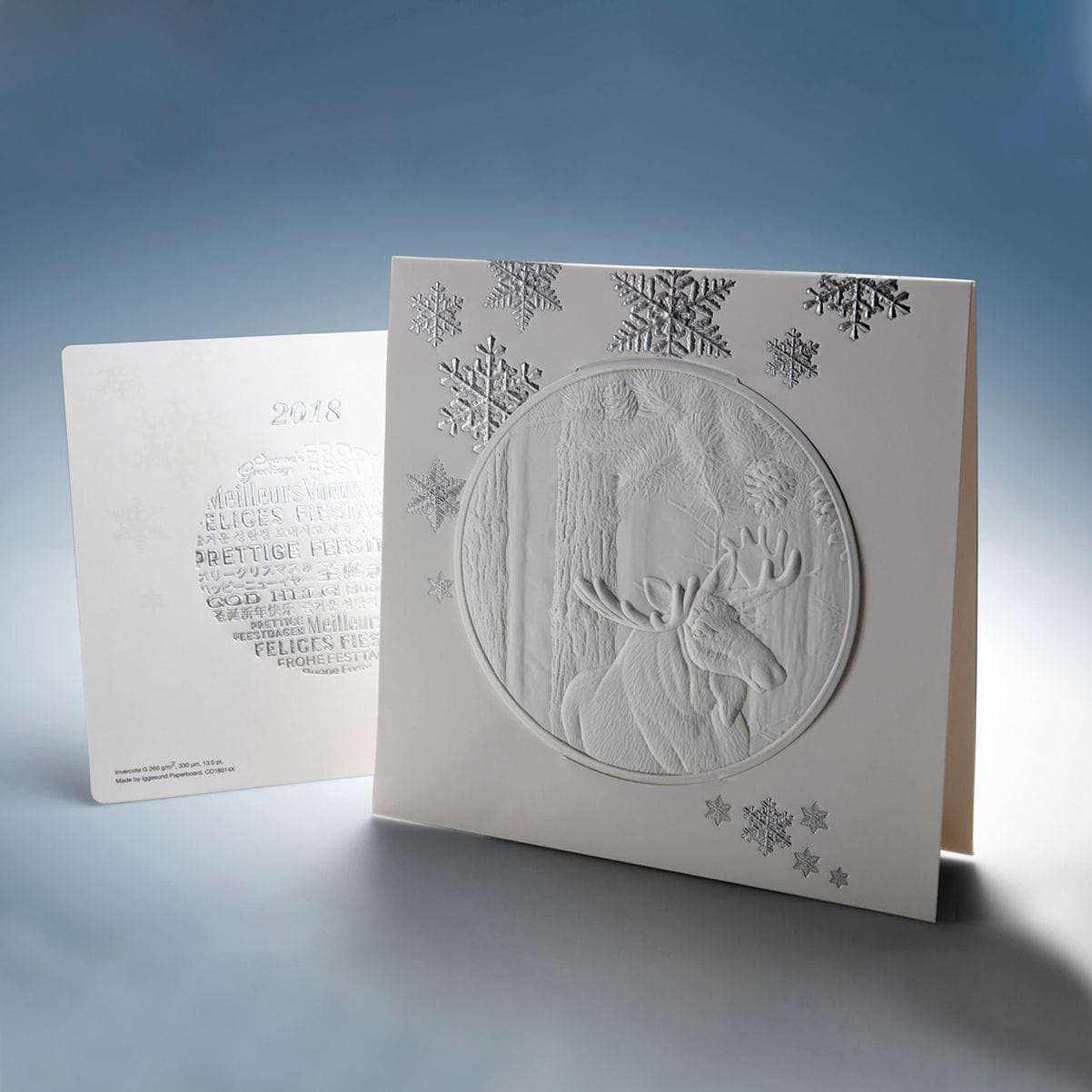
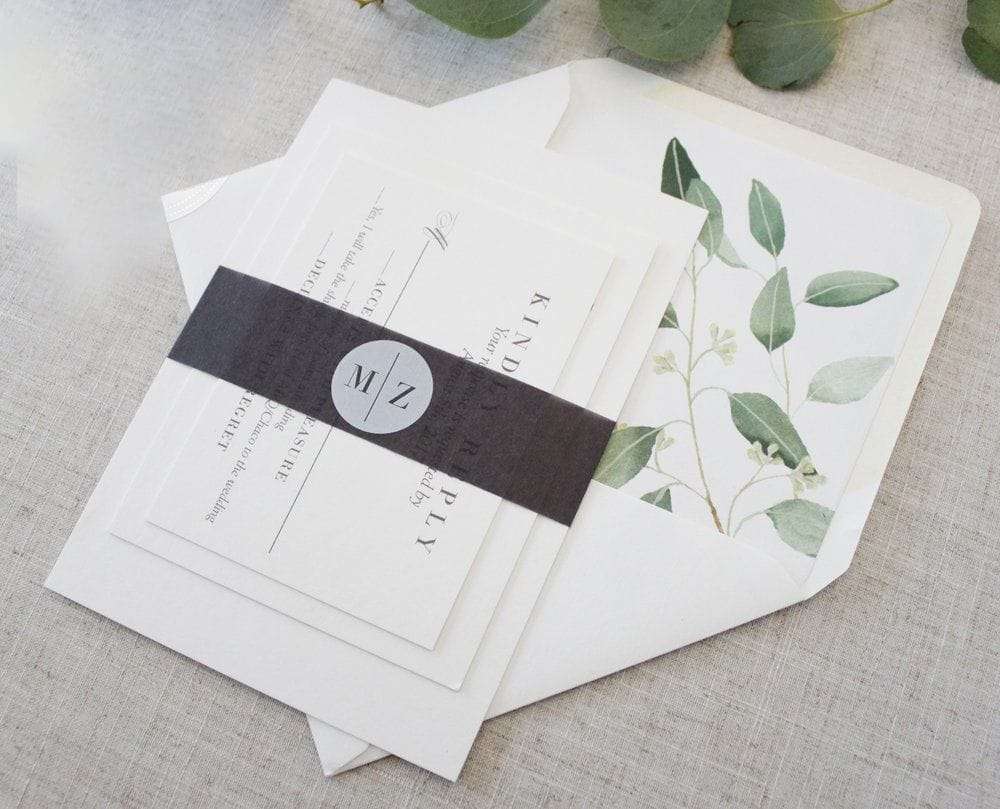
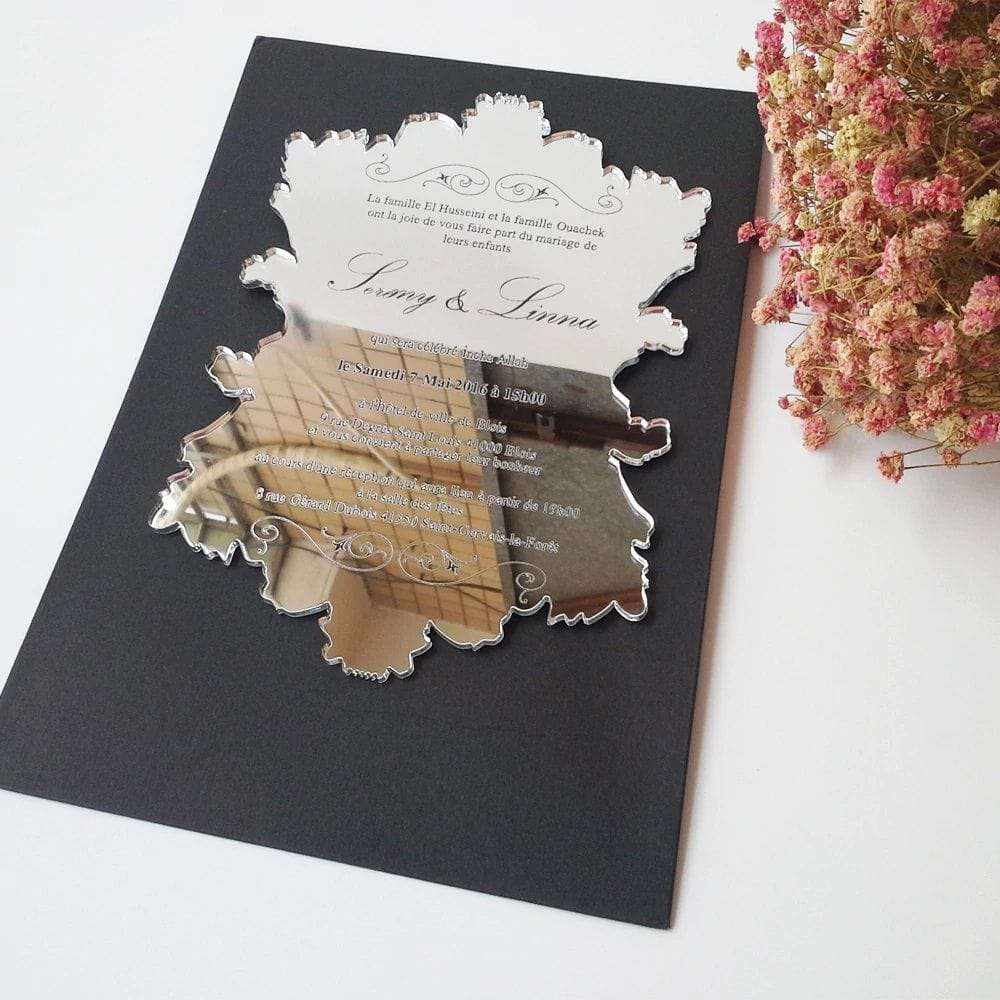
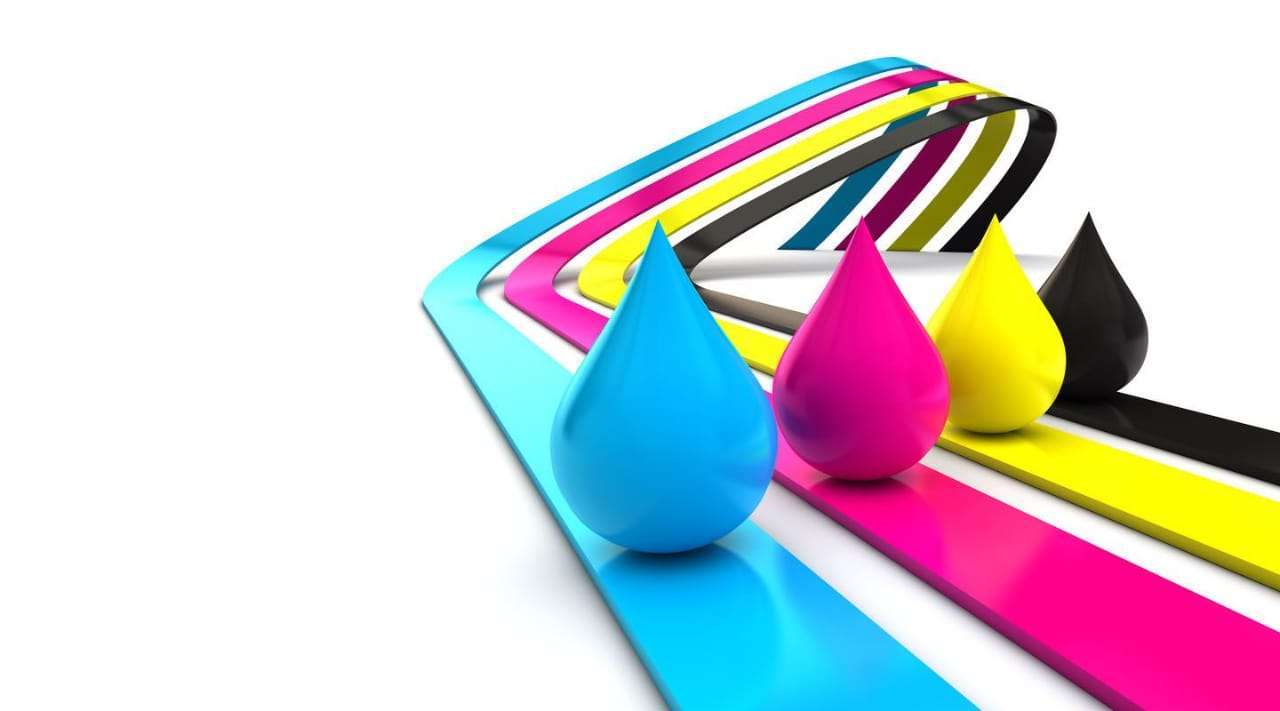
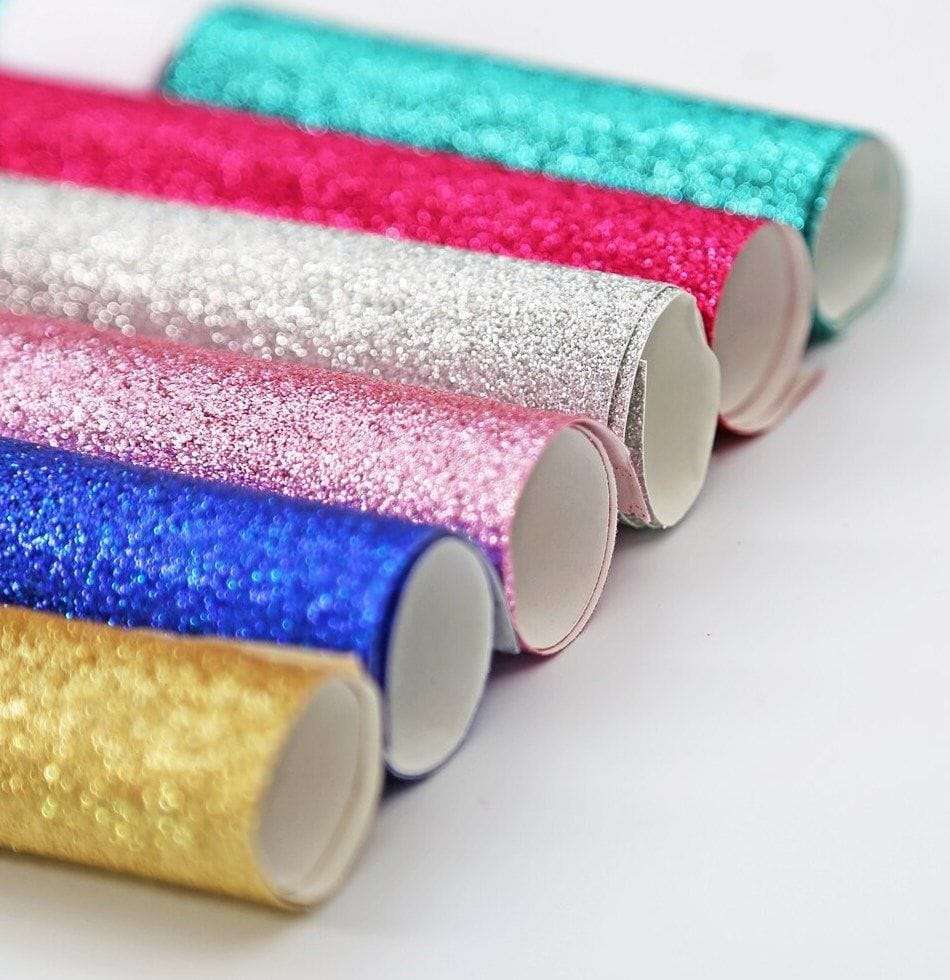
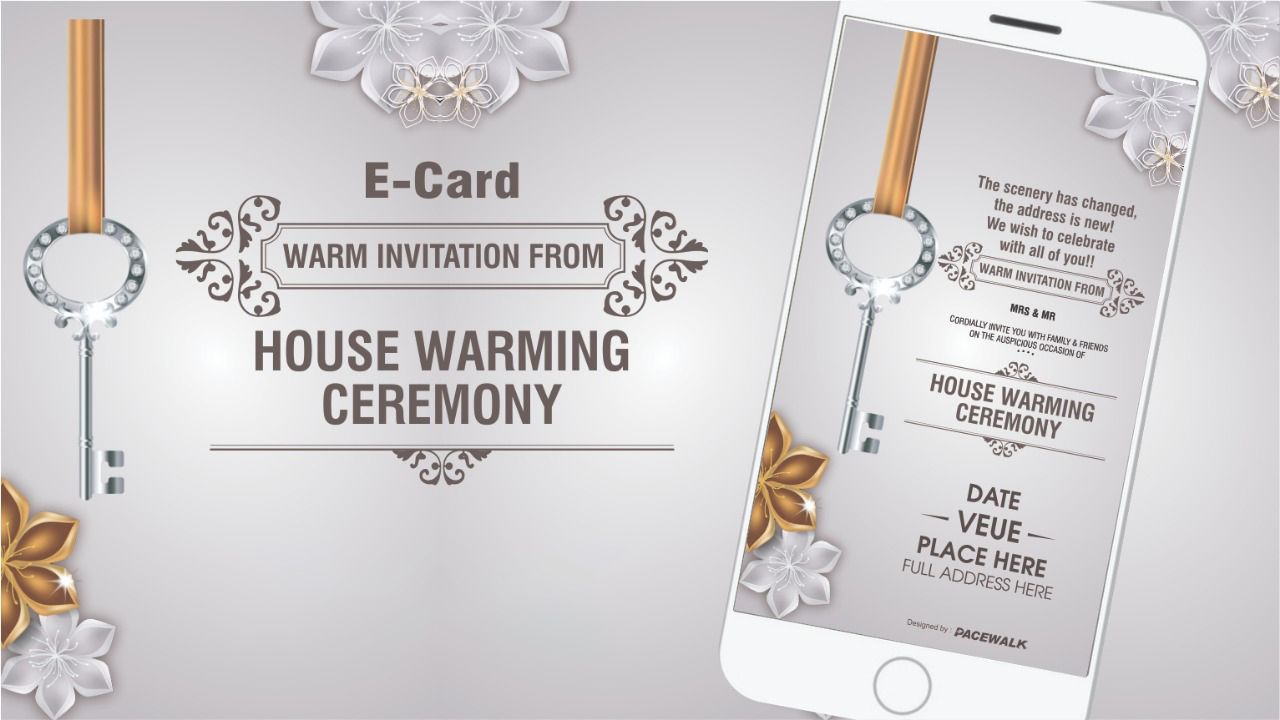

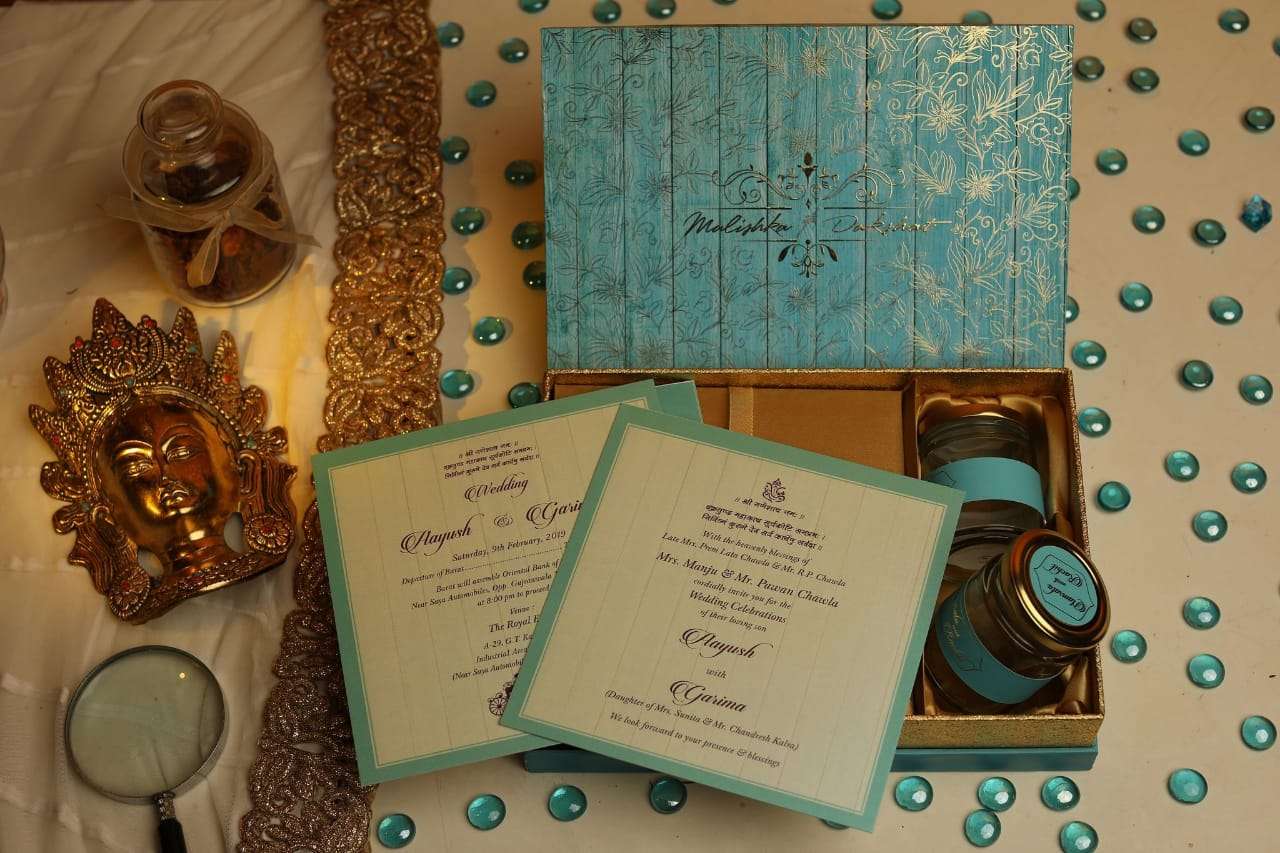

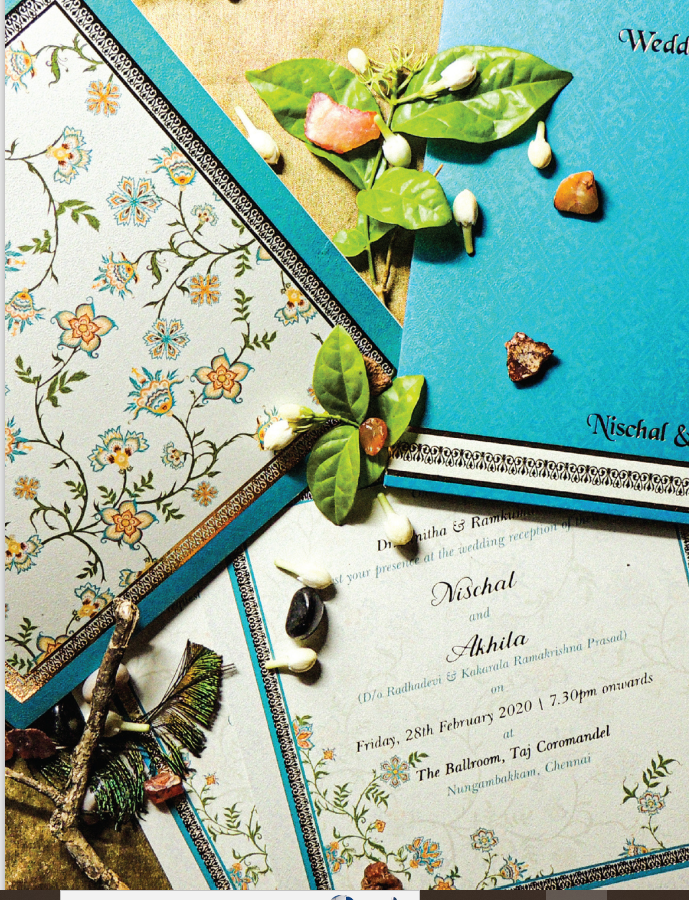

Leave A Comment
You must be logged in to post a comment.